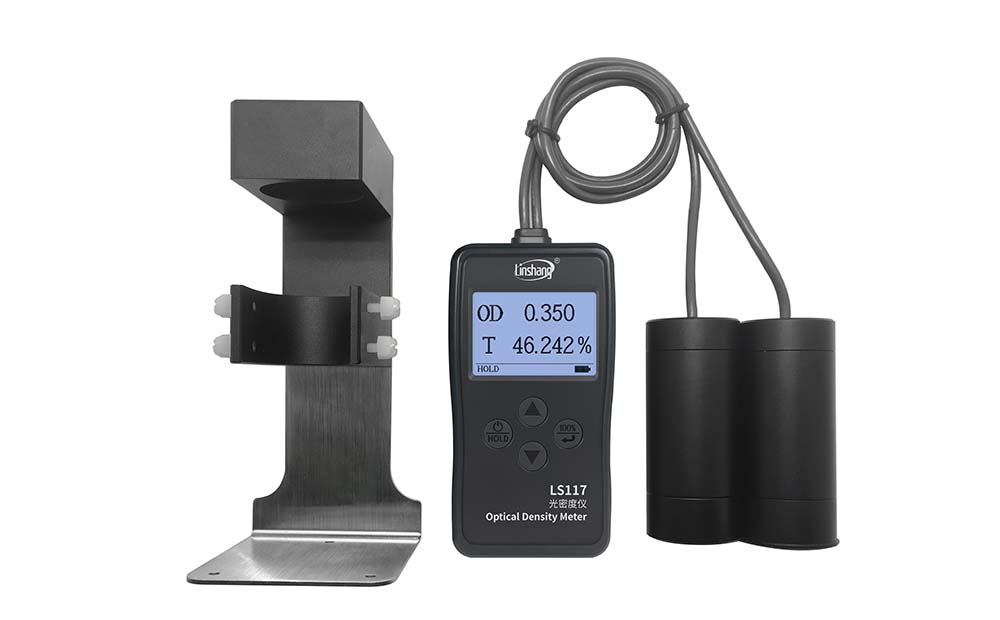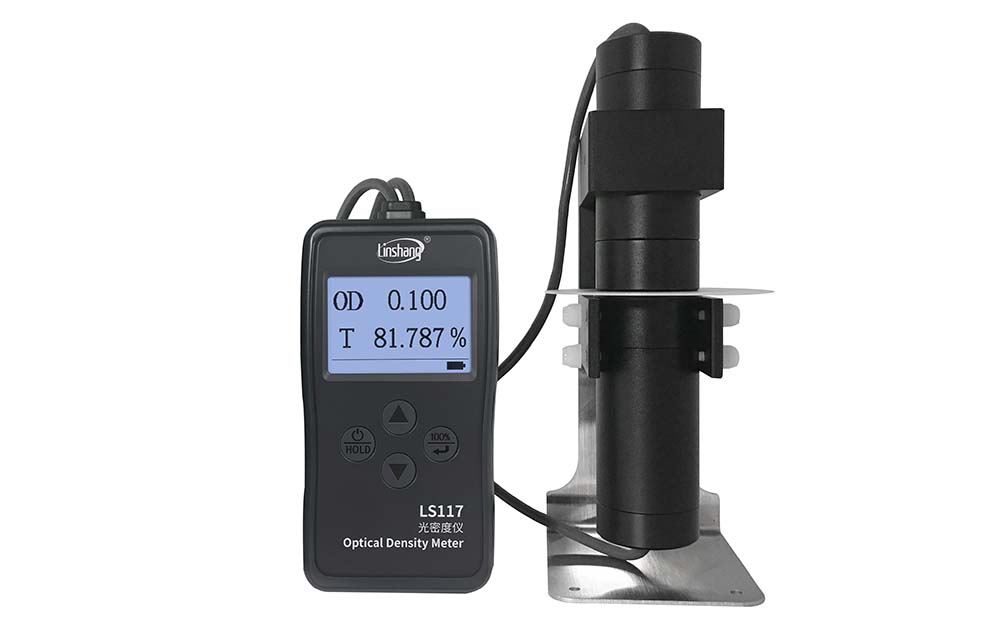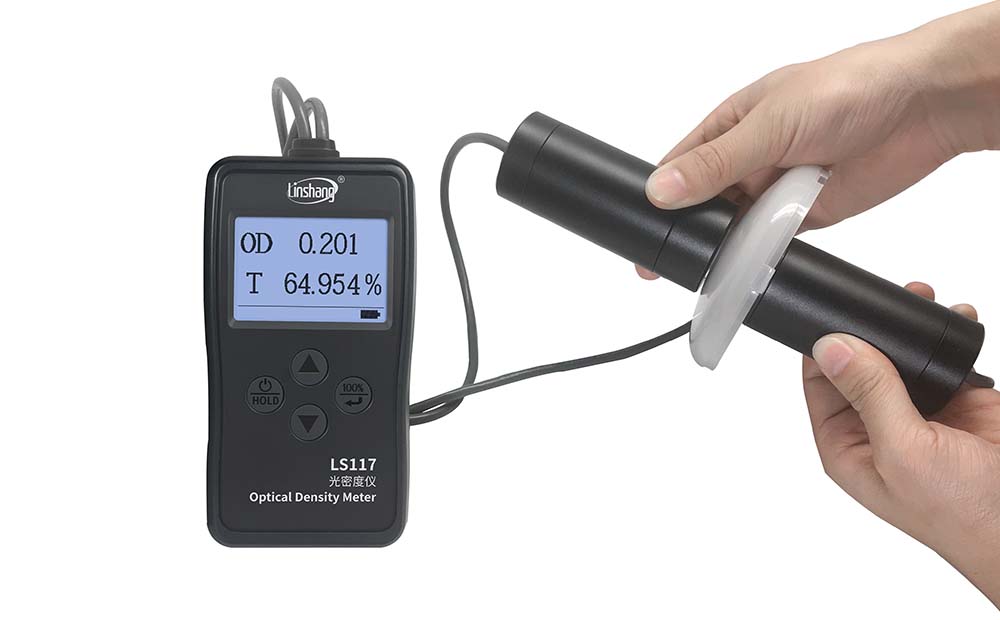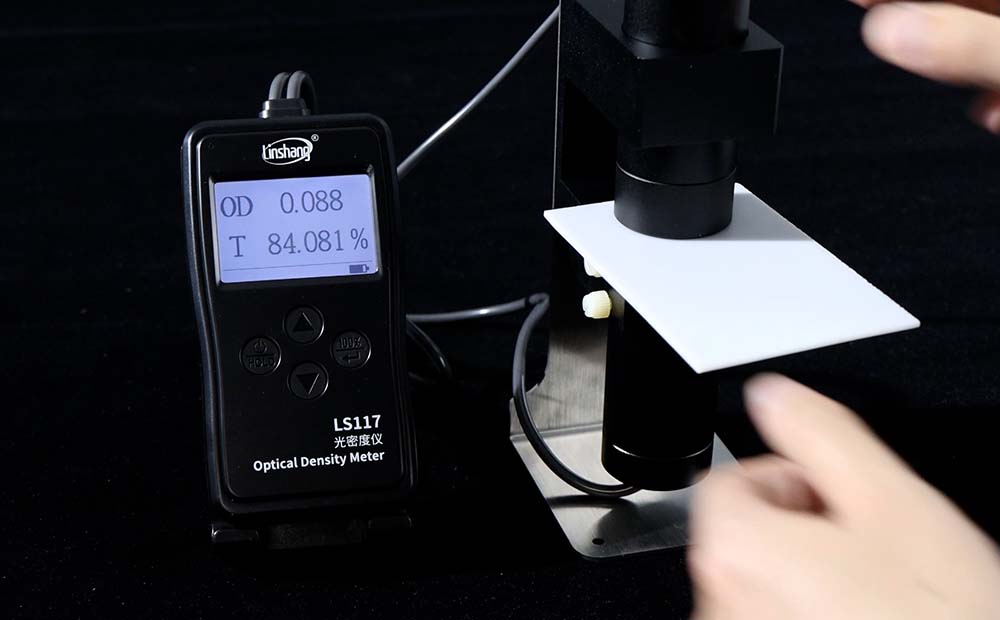The Definition of Optical Density and the Measurement
Optical density is the natural logarithm of the ratio of incident to transmitted radiant power through a material. For measuring the optical density of some materials, you can use Linshang LS117 Optical Density Meter.
What is the meaning of optical density?
In chemistry, absorbance or decadic absorbance is the common logarithm of the ratio of incident to transmitted radiant power through a material, and spectral absorbance or spectral decadic absorbance is the common logarithm of the ratio of incident to transmitted spectral radiant power through a material. Absorbance is dimensionless, and in particular is not a length, though it is a monotonically increasing function of path length, and approaches zero as the path length approaches zero. The use of the term "optical density" for absorbance is discouraged.
In physics, a closely related quantity called "optical depth" is used instead of absorbance: the natural logarithm of the ratio of incident to transmitted radiant power through a material. The optical depth equals the absorbance times ln(10).The calculation formula of optical density is: OD= log10 (1 / Transmittance) = log10 (Incident Light / Transmitted Light)
The term absorption refers to the physical process of absorbing light, while absorbance does not always measure absorption: it measures attenuation (of transmitted radiant power). Attenuation can be caused by absorption, but also reflection, scattering, and other physical processes.

OD vs Absorbance
Absorbance is the logarithm of the ratio of the incident light intensity before the light passes through the solution or a substance and the transmitted light intensity after the light passes through the solution or the substance, and the factors affecting it are solvent, concentration, temperature, etc. The absorbance coefficient is related to the wavelength of the incident light and the substance through which the light passes.
OD is an abbreviation for optical density, which means the density of light absorbed by the detected material. It is a proper noun in the detection method, and the general understanding of the more difficult specific detection involves a lot of physics and other knowledge you only need to know is negative light through the detected material, the difference in energy before and after is the energy absorbed by the detected material, a specific wavelength, and the same detected material.
Optical density means that the density of light absorbed by the test substance, OD = 1og (1/trans), where trans is the light transmission value of the test substance.
Optical Density Measuring Instrument
Linshang Technology's LS117 Optical Density Meter. The instrument adopts the principle of diffuse transmission, which can test density of light and light transmittance at the same time, and is suitable for the light transmittance and density test of milky white translucent materials and frosted matte materials
Measuring accurately, and ensure it can pass the inspection of Chinese national authoritative metrology institute
How to measure optical density values?
The operation of LS117 is very simple. It can be tested after the power is turned on. The OD displayed on the interface is the optical density value. "T" is the transmittance value.
Measurement mode
Linshang LS117 Optical Density Meter has two measurement mode:
1.Fast mode: the measurement time is 1.1s each time. If the OD<5, the FAST mode is recommended.
2.Slow mode: the measurement time is 2.8s each time. If the OD≥5, the SLOW mode is recommended.
Measurement process
1) Light transmittance test for diffuse transmission material:
As for light transmittance of various milky, fogged, abrasive and matte materials, such as milky and abrasive glasses, ceiling lamps, diffuser, and zirconium oxide, etc. The two testing methods are adopted subject to size of the test sample.
a.Testing of small samples
Tight the light source probe with the receiving probe on the holder, the light transmittance is displayed as 100.00% in the interface. Lift up the receiving probe and put the test sample into the holder, and then tightly attach the receiving probe to the light source probe again. The current “T” value is the transmittance value of the test sample, and the current OD value is the optical density value of the test sample.
b.Testing of large samples
In the case that it's impossible for the test sample (like large lamp chimney) to be put into the holder and it's necessary to remove the light source probe and the receiving probe from the holder, the Probe-in-hands method is used to measure the sample, with the testing process as shown in the followings:
Align and keep those two probes in tight before powering the meter on. After “Warm-up”, the meter enters into measurement interface, with T displayed as 100.00%.
Separate two probes and clamp the test sample. The current T value is the light transmittance value of the test sample, and the current OD value is the optical density value of the test sample (it's necessary to match two test probes together and make convex surface of the object face to the receiving probe).
2) Optical density measurement of films
In the case that there is no sample and the light source probe is tightly attached to the receiving probe, when OD in the interface is displayed as 0.000, the measurement begins. Lift up the receiving probe and put into the test sample, and then tightly attach the receiving probe to the light source probe again.

Optical density meter test small samples

Optical density meter test larger samples
Precautions when measuring optical density
1. When there is no test object, the transmittance data cannot return to 100.00%, short press the right button to calibrate.
2. When the "Ambient light too strong" prompt appears, you should avoid the external light directly into the receiving probe's light entry hole. Although the instrument adopts the ambient light compensation technology, it is recommended to use the instrument in low light environment.
3. If you are prompted with "Two part aligning?", please check whether the receiving probe and the light source probe are aligned tightly or whether the test sample is placed between the receiving probe and the light source probe.
4. When putting in high transmittance samples, the transmittance value may show 100%, in this case, you should paste black flannel on the front of the receiving probe before testing.
5. Avoid contact with corrosive substances and keep away from high temperature and high humidity environment.
What materials can an Optical Density Meter measure?
Linshang LS117 Optical Density Meter is used to measure the transmittance and density of light of the materials, which mainly include the following three kinds of materials:
The light transmittance of various diffuse transmission materials such as milky, fogged, abrasive, and matte materials.
Absolute density of light of materials like X-ray film, and aluminum film.
The absolute density of light measurement of all films.
- LS117 Optical Densitometer Measure Welding Mask Glass
- Companre LS117 Optical Density Meter With Others
- LS117 Densitometer Measure Application
- Difference of LS117 Densitometer and X-Rite 341 Densitometer
- LS117 Transmission Densitometer-Related Knowledge
- The details of LS152 glass light transmittance on-line monitoring device
